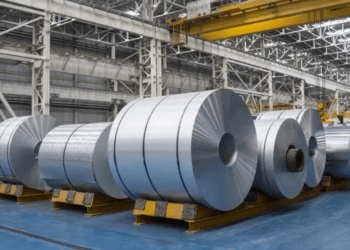Priyadarshi Nanu Pany
Founder & CEO of CSM Technologies
Of late, you might have hit upon a swarm of eyeball-grabbing news. On how the IT giants are pivoting to smaller Indian cities for the next phase of scalable and sustainable growth. Today, the Tier 2 cities are the hotspots of IT growth. Undeniably, they are the future too. But I will hark back to the past to grasp the present and decode the future.
Viewing from the lens of an entrepreneur, I can say the momentum for IT took off in the early 90s when India dismantled the inspector licence Raj and threw ajar the gates to liberalization. Fuelled by the spate of economic reforms, India became the Go-To destination for outsourcing. The IT boom gathered pace in the mid-90s when Bangalore, Chennai, Hyderabad, and Pune emerged as bustling IT hubs. Homegrown companies like Infosys, TCS, and Satyam (now Tech Mahindra) rode on the boom and scaled up.
The spotlight then was on these Tier 1 hubs. To say that there weren’t alternative destinations or smaller cities with potential isn’t true. The local governments in these smaller cities started making all out efforts to woo the IT players. They unveiled new IT policies, embedded a suite of incentives and started building social and educational infrastructure to draw the coveted IT companies and the best IT talent. But this string of initiatives met with scant success as companies were still obsessed with the prized locations. Gradually, the rampant and unanticipated growth of IT clogged infrastructure in the established hubs of Bangalore, Chennai, and Hyderabad. The insane demand for IT also sent office space costs through the roof. IT companies started feeling the burden on their cash books. They started contemplating about affordable options- destinations that could power the next wave of growth without breaking the bank.
However, it took a Covid pandemic in 2020 to solidify the fortunes of smaller cities. An unforeseen pandemic quarantined people home and drastically changed the work-worker-workplace equation. IT folks comfortably nestled in the prized locations rooted for their hometowns. The pandemic-induced decentralization of work broke the traditional hesitation of companies to expand into smaller towns as folks who had tasted the comfort of Working from Home (WFH) felt hesitant to revert to the bigger cities.
The newfound flexibility has spurred a development boom in Tier 2 cities such as Ahmedabad, Jaipur, Bhubaneswar, Madurai, and Vijayawada.
The states have also been dangling incentives to attract the big IT monoliths and retain skilled talent. Over the past few months, Bhubaneswar has attracted IT biggies- Accenture and Cognizant besides offering space to mid-scale and homegrown IT companies. The outcome is the culmination of sustained efforts by the Government of Odisha. Their new ICT policy offers a 100% reimbursement of stamp duty, registration fees, and conversion fees for Greenfield IT parks. IT growth has come in as a natural bonanza for emerging hubs like Bhubaneswar which are more systematic and resilient in planning for the future, unlike their flashy, bigger counterparts. These cities have gotten past the dilemma of what comes first- industry or infrastructure? Instead of biding time, they have focused on creating seamless plug-and-play spaces to draw in the IT players.
In fact, smaller cities offer a dual advantage: They help reduce employee attrition and lessen the infrastructure pressure on Tier-I tech hubs. The less competitive, more relaxed lifestyle in smaller cities contributes to higher employee satisfaction and retention.
In this narrative of disruption and renewal, India’s Tier-II cities are no longer mere bystanders but active participants in shaping the nation’s technological future. India’s tech renaissance is unfolding before our very eyes, and the once-underestimated Tier-II cities are stealing the show, proving that greatness can emerge from the most unexpected of places.
(This article first appeared on CSM Technologies’ website. It has been republished with the company’s permission)





















